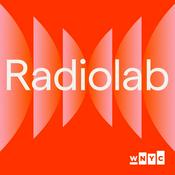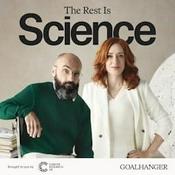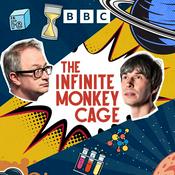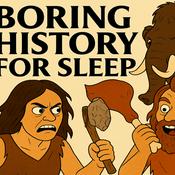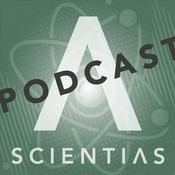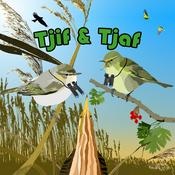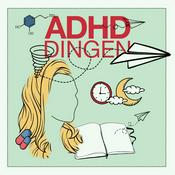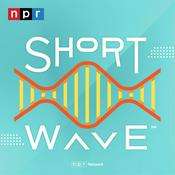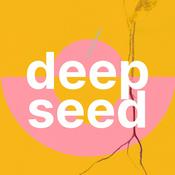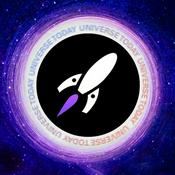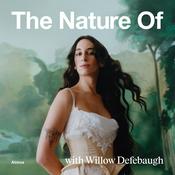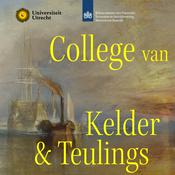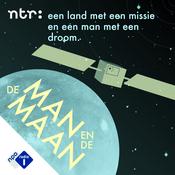159 afleveringen

Monstersterren in GS 3073
16-12-2025 | 10 Min.
Gigantische sterren tijdens de begindagen van ons heelal. Hoe zit dat nou weer?Astronomers find first direct evidence of “Monster Stars” from the cosmic dawn:https://www.port.ac.uk/news-events-and-blogs/news/astronomers-find-first-direct-evidence-of-monster-stars-from-the-cosmic-dawn1000–10,000 M⊙ Primordial Stars Created the Nitrogen Excess in GS 3073 at z = 5.55:https://iopscience.iop.org/article/10.3847/2041-8213/ae1a63Astronomen vinden eerste directe bewijs voor ‘monstersterren’ in het vroege heelal:https://www.astronomie.nl/nieuws/astronomen-vinden-eerste-directe-bewijs-voor-monstersterren-in-het-vroege-heelal-4773GA-NIFS: An extremely nitrogen-loud and chemically stratified galaxy at z ∼ 5.55:https://arxiv.org/html/2404.04148v1Afbeelding: © Nandal et alDe Zimmerman en Space podcast is gelicenseerd onder een Creative Commons CC0 1.0 licentie.http://creativecommons.org/publicdomain/zero/1.0

Mars sample return
09-12-2025 | 17 Min.
Ja, hoe zit dat eigenlijk met die buisjes die momenteel op Mars verzameld worden door de Perseverance rover? Dat hoort u in deze aflevering.Vision and Voyages for planetary science in the decade 2013-2022:https://science.nasa.gov/wp-content/uploads/2023/04/Planetary_DS.pdfMars rock samples:https://science.nasa.gov/mission/mars-2020-perseverance/mars-rock-samples/Mars sample return:https://science.nasa.gov/mission/mars-sample-return/NASA ziet op dit moment twee opties:https://www.nasa.gov/news-release/nasa-to-explore-two-landing-options-for-returning-samples-from-mars/Mars Rock Samples: The Stories They Could Tell:https://www.youtube.com/watch?v=iIJcqiqYXG8Earth Return Orbiter – the first round-trip to Mars:https://www.esa.int/Science_Exploration/Human_and_Robotic_Exploration/Earth_Return_Orbiter_the_first_round-trip_to_MarsFunding levels for fiscal year (FY) 2026:https://www.whitehouse.gov/wp-content/uploads/2025/05/Fiscal-Year-2026-Discretionary-Budget-Request.pdfBringing Mars rock samples back to Earth:https://www.youtube.com/watch?v=YPNVVDphQVcDe Zimmerman en Space podcast is gelicenseerd onder een Creative Commons CC0 1.0 licentie.http://creativecommons.org/publicdomain/zero/1.0

Zijn wij eigenlijk buitenaards leven? Of anders geformuleerd: komen de bouwstenen van ons leven van elders?
02-12-2025 | 18 Min.
De ontdekking van tryptofaan op een ander hemellichaam dwingt ons na te denken over de geschiedenis van leven op onze aarde.Scientists found tryptophan, the ‘sleepy’ amino acid, in an asteroid. Here’s what it means:https://edition.cnn.com/2025/11/27/science/tryptophan-asteroid-bennu-nasa-samplePrebiotic organic compounds in samples of asteroid Bennu indicate heterogeneous aqueous alteration:https://www.pnas.org/doi/10.1073/pnas.2512461122Hayabusa 2:https://en.wikipedia.org/wiki/Hayabusa2OSIRIS-REx:https://nl.wikipedia.org/wiki/OSIRIS-RExTryptofaan:https://nl.wikipedia.org/wiki/TryptofaanNucleobase:https://nl.wikipedia.org/wiki/NucleobaseNucleobase synthesis in interstellar ices:https://upload.wikimedia.org/wikipedia/commons/5/5d/S41467-019-12404-1.pdfCould nucleobases form in the ISM? A theoretical study in the horsehead nebula:https://arxiv.org/pdf/2303.03963De Zimmerman en Space podcast is gelicenseerd onder een Creative Commons CC0 1.0 licentie.http://creativecommons.org/publicdomain/zero/1.0

Maar waar komt die mysterieuze interstellaire komeet 3I/ATLAS vandaan?
25-11-2025 | 16 Min.
Onze derde bekende interstellaire bezoeker, 3I/ATLAS, is de laatste tijd flink aanwezig in het nieuws. Luisteraar van deze podcast Chris vraagt zich af of we niet terug kunnen rekenen waar dit object vandaan komt.Asteroid Terrestrial-impact Last Alert System:https://atlas.fallingstar.com/JUICE and 3I/ATLAS: An Unexpected Encounter in Space:https://www.mps.mpg.de/juice-and-3iatlas-an-unexpected-encounter-in-spaceNASA’S STEREO Observes Interstellar Comet 3I/ATLAS:https://science.nasa.gov/blogs/3iatlas/2025/11/19/nasas-stereo-observes-interstellar-comet-3i-atlas/JWST detection of a carbon dioxide dominated gas coma surrounding interstellar object 3I/ATLAS:https://arxiv.org/pdf/2508.18209All The Real Science of 3I/ATLAS. The Ultimate Guide:https://www.youtube.com/watch?v=hZWKAxFeNp8The Kinematic Age of 3I/ATLAS and its Implications for Early Planet Formation:https://arxiv.org/pdf/2507.081113I/ATLAS: In Search of the Witnesses to Its Voyage:https://arxiv.org/pdf/2509.07678Search for Past Stellar Encounters and the Origin of 3I/ATLAS:https://arxiv.org/pdf/2509.03361Thick disk:https://astronomy.swin.edu.au/cosmos/t/thick+diskSpying Interstellar Comet 3I/ATLAS Near Perihelion:https://www.universetoday.com/articles/spying-interstellar-comet-3iatlas-near-perihelionNewly-Discovered Interstellar Comet is Billions of Years Older Than the Solar System:https://www.universetoday.com/articles/newly-discovered-interstellar-comet-is-billions-of-years-older-than-the-solar-systemFrom a Different Star: 3I/ATLAS in the context of the Otautahi–Oxford interstellar object population model:https://arxiv.org/pdf/2507.05318Foto credit: International Gemini Observatory/NOIRLab/NSF/AURA/Shadow the Scientist.De Zimmerman en Space podcast is gelicenseerd onder een Creative Commons CC0 1.0 licentie.http://creativecommons.org/publicdomain/zero/1.0

Explosieve uitbarsting op een andere ster dan onze zon
17-11-2025 | 11 Min.
Een beetje een populair nieuwsitem, maar goed. Voor het eerst is een CME, een Coronal Mass Ejection, waargenomen bij een andere ster dan onze zon. Wellicht biedt deze aflevering nog wat extra context, die u in andere nieuwsbronnen moest missen.First confirmed sighting of giant explosion on nearby star:https://www.eurekalert.org/news-releases/1105091Radio burst from a stellar coronal mass ejection (Arxiv):https://arxiv.org/pdf/2511.09289Radio burst from a stellar coronal mass ejection (Nature):https://www.nature.com/articles/s41586-025-09715-3Steun deze podcast en koop het album met muziek:https://henszimmermanaudio.bandcamp.com/album/really-slow-tapesAfbeelding credit: Olena Shmahalo/Callingham et al.De Zimmerman en Space podcast is gelicenseerd onder een Creative Commons CC0 1.0 licentie.http://creativecommons.org/publicdomain/zero/1.0
Meer Wetenschap podcasts
Trending Wetenschap -podcasts
Over Zimmerman en Space
Luister naar Zimmerman en Space, Radiolab en vele andere podcasts van over de hele wereld met de radio.net-app
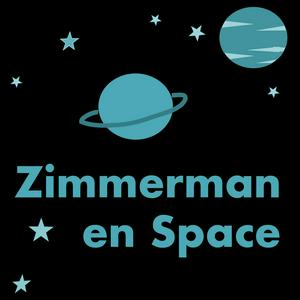
Ontvang de gratis radio.net app
- Zenders en podcasts om te bookmarken
- Streamen via Wi-Fi of Bluetooth
- Ondersteunt Carplay & Android Auto
- Veel andere app-functies
Ontvang de gratis radio.net app
- Zenders en podcasts om te bookmarken
- Streamen via Wi-Fi of Bluetooth
- Ondersteunt Carplay & Android Auto
- Veel andere app-functies


Zimmerman en Space
download de app,
luisteren.

